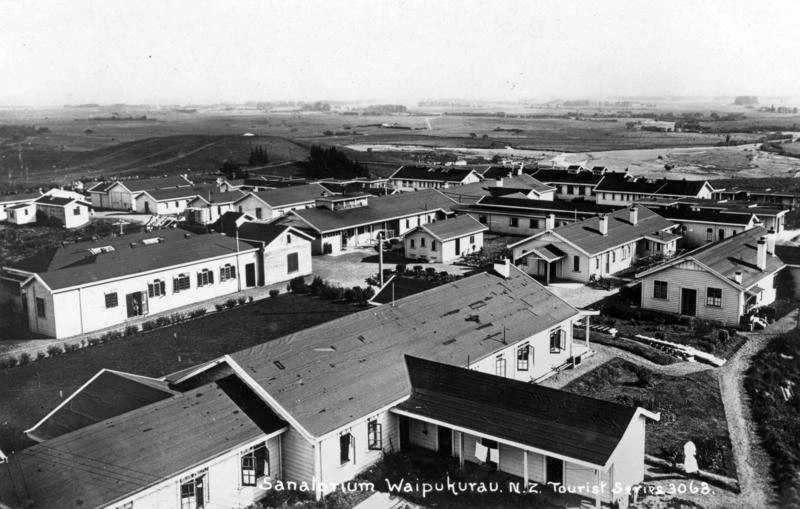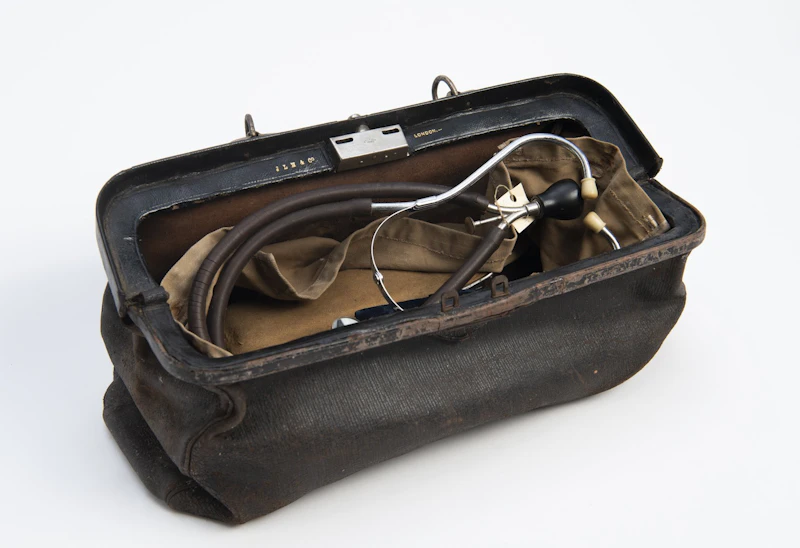by Emeritus Professor of Obstetrics and Gynaecology Peter Stone, University of Auckland, 2025
A home birth kit in the Northland Medical Museum collection offers a window into the world of birthing in times gone by.
Until the mid 20th century giving birth at home or in small maternity units was common. General practitioners were trained to manage quite complex situations with limited facilities and they would be carrying their own equipment. Midwives similarly carried a kit with equipment and supplies needed for the birth and the immediate care of the newborn.
After the Second World War, both specialist obstetric training and general practitioner obstetrics became more formalised. There was an increasing trend towards giving birth in dedicated maternity hospitals.
Since then, the number of home births has declined, with an estimated 3-5% of births taking place at home (ref: Maternity Associates - Compassionate Midwifery Care)
Changes in the provision of maternity services in New Zealand has led to general practitioners no longer being involved with births at present.
Close up photographs of this home birth kit from the Northland Medical Museum collection shows not only the contents of the case and functional elements of carrying birthing tools into the home, but alludes to the various situations that the doctor would need to be prepared for.
In the above image, the case is opened. Inside the lid is an array of artery forceps, a scalpel, and a metal catheter for bladder drainage.
In the case are a number of specula for visualising the birth canal and the cervix, more grasping forceps to assist with retrieval of the placental membranes, and a glass syringe for local anaesthetic injection. All the instruments in the photographs would be sterilised in the home or the birthing unit, usually in very hot water or an autoclave.
This next image shows the entire case, including a metal tray holding obstetric forceps to assist with the birth and a wooden tray containing medications. Both these trays fitted into the base of the case, being slid into a recess below the main case. In addition to the obstetric forceps, the metal dilators and glass syringe were placed in the metal tray. The dilators would most likely have been used to manage a miscarriage. Having the two trays like this was a convenient way of being able to carry all this equipment and medications in one bag.
You can see how the two trays fit side by side into the base of the case in the detail photographed below.
The final image below shows a pair of obstetric forceps. Undertaking a forceps delivery in the home or in a birthing unit not only required considerable skill but also in general urgent indications where transfer to a larger unit would have been impractical.
This home birth kit provides an insight into New Zealand's obstetrics history. You can view this example on display at Northland Medical Museum.
Northland Medical Museum was founded by Dr John Swinney FRCA, and is based at the Heritage Park in Maunu, Whangārei. It is home to a wide range of medical memorabilia and health stories from Northland and New Zealand.
This kōrero | story was originally published on the Our Health Journeys e-museum website in 2025, and is shared on Kōtuia with permission from Our Health Journeys e-museum.



